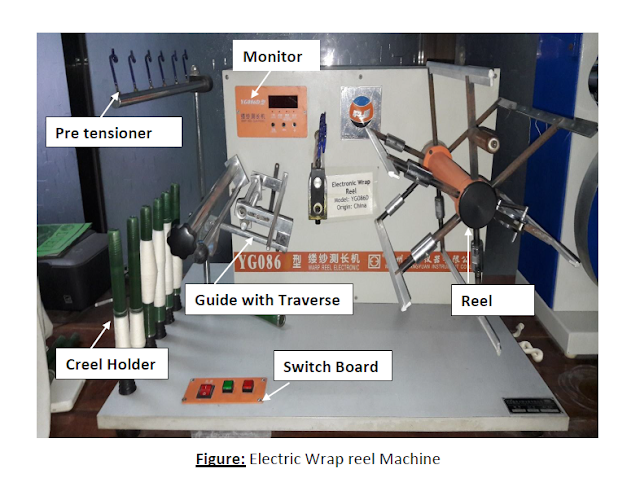Elastomeric Fibers: Types, Properties, and Applications
Introduction: Elastomeric fibers play a crucial role in creating garments that provide comfort, stretch, and shape retention. These synthetic fibers possess remarkable elasticity and can quickly recover their original shape after being stretched. In this article, we will explore the types, properties, and diverse applications of elastomeric fibers.
What are Elastomeric Fibers? Elastomeric fibers are synthetic fibers that exhibit high extensibility and rapid recovery. These fibers can stretch up to seven times their original length and bounce back to their initial state without relying on being crimped or coiled. They are predominantly made of segmented polyurethane, with a minimum composition of 85% in most cases. Elastomeric fibers are known by various names such as Spandex in the United States and Lycra in Europe. Other types of elastomeric fibers include elastodiene fibers, elastomultiester fibers, and certain polyolefin fibers, although they are commercially less significant compared to elastane fibers.
Types of Elastomeric Fibers: Several types of elastomeric fibers are used in the textile industry. The most common ones include:
Spandex/Lycra/Elastane: Spandex is a well-known elastomeric fiber that offers exceptional stretch and recovery properties. It is widely used in clothing such as sportswear, hosiery, intimate apparel, and casual outerwear.
Neoprene: Neoprene is a versatile elastomeric fiber known for its resistance to chemicals, weather, and temperature extremes. It is often used in protective clothing, medical implants, and various industrial applications.
Natural Rubber Latex: Derived from the rubber tree, natural rubber latex fibers provide excellent elasticity and durability. They find applications in products like gloves, bandages, and orthopedic braces.
Polyester Elastane/PBT Elastane: Polyester elastane and PBT elastane are blends of elastomeric fibers with polyester fibers. These combinations offer stretch, comfort, and shape retention in activewear and swimwear.
Polyurethane (PU): Polyurethane elastomeric fibers are known for their superior elasticity and durability. They are used in a wide range of applications, including clothing, soft furnishings, and medical textiles.
Elastolefin Fibers: Elastolefin fibers are a group of elastomeric fibers derived from olefinic polymers. They provide excellent stretch and recovery properties and are used in various textile and industrial applications.
Properties of Elastomeric Fibers: Elastomeric fibers possess several unique properties that make them desirable for various applications. These properties include:
Elasticity: Elastomeric fibers can stretch up to four to seven times their original length while retaining excellent holding power. The degree of elongation depends on the fiber's diameter, with heavier yarns exhibiting less extension.
Resilience: These fibers are highly flexible and exhibit rapid recovery, ensuring crease-free fabrics and excellent shape retention.
Absorption: Elastomeric fibers have low absorption rates, which can result in a clammy feeling against the skin. Therefore, they are often blended with other fibers or treated to enhance absorbency.
Strength: Elastomeric fibers are relatively strong and durable, with their breaking point typically reached only under extreme stretching conditions.
Draping: Due to their lightweight and flexible nature, elastomeric fibers have good draping properties, making them suitable for various garment applications.
Resistance: Elastomeric fibers exhibit resistance to seawater, sunlight, shrinkage, mildew, insects, perspiration, and most acids. They are also resistant to body oils, cosmetics, and suntan lotions.
Uses or Applications of Elastomeric Fibers: Elastomeric fibers find applications in a wide range of industries and products. Some of their key uses include:
Clothing: Elastomeric fibers are extensively used in clothing items such as socks, tights, underwear, jeans, leggings, sportswear, swimwear, and intimate apparel. They provide stretch, flexibility, and comfort to these garments.
Medical Textiles: Elastomeric fibers are utilized in medical applications such as support stockings, bandages, orthopedic braces, and surgical garments due to their elasticity and compatibility with the human body.
Industrial Applications: These fibers find use in protective clothing, cable and marine ropes, fish netting, filtration devices, concrete reinforcement, geotextiles, and various other industrial applications that require stretchability and resilience.
Soft Furnishings: Elastomeric fibers are employed in soft furnishings like mattress covers and three-piece suite covers, providing elasticity and shape retention.
Conclusion: Elastomeric fibers are essential components of garments and textiles that require stretch, recovery, and comfort. With their remarkable elasticity, resilience, and other valuable properties, elastomeric fibers enable the creation of innovative and functional products. From clothing and medical textiles to industrial applications, these fibers continue to drive advancements in various industries, enhancing both performance and comfort for end-users.
References:
- An Introduction to Textile Coloration: Principles and Practice by Roger H. Wardman.
- Fibers to Fabrics by Bev Ashford.
- Handbook of Textile Fiber Structure - Volume 1: Fundamentals and Manufactured Polymer Fibers edited by S. J. Eichhorn, J.W.S. Hearle, M. Jaffe, and T. Kikutani.
- Synthetic Fibers: Nylon, Polyester, Acrylic, Polyolefin edited by J. E. McIntyre.
- Handbook of Textile Fibers: Man-Made Fibers by J Gordon Cook.


Comments
Post a Comment